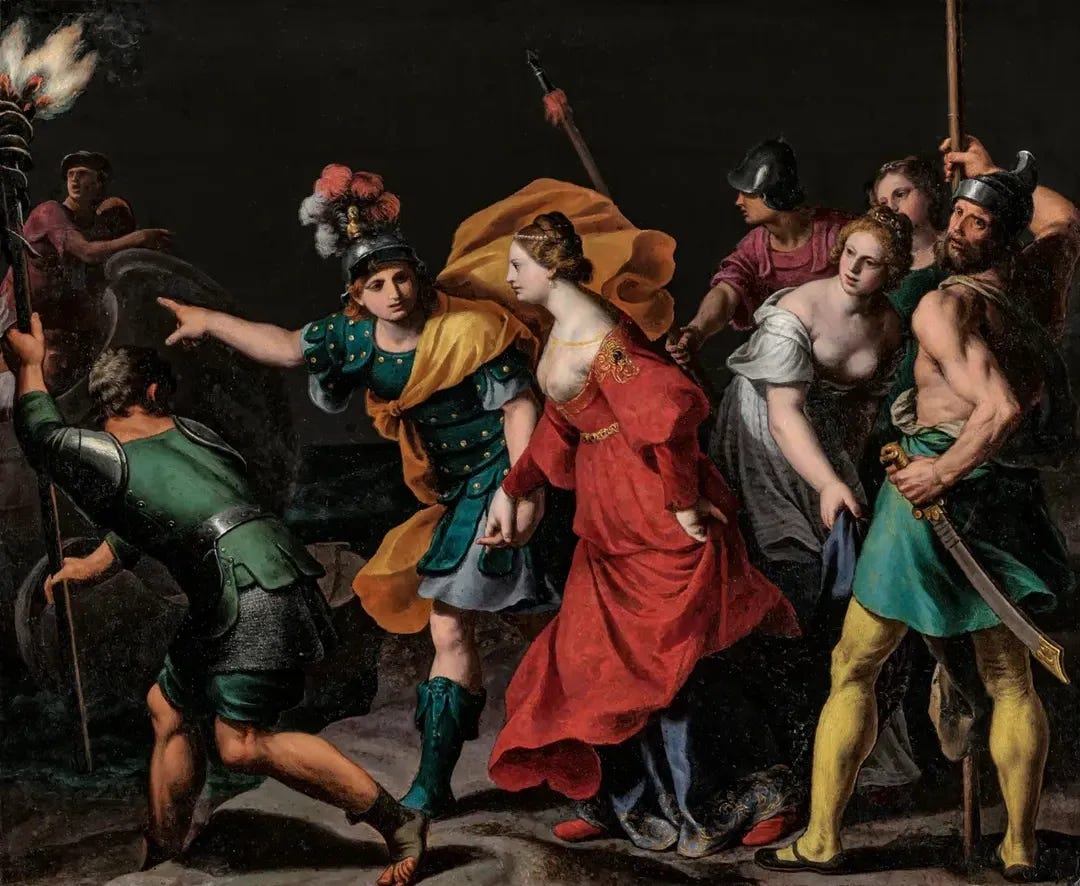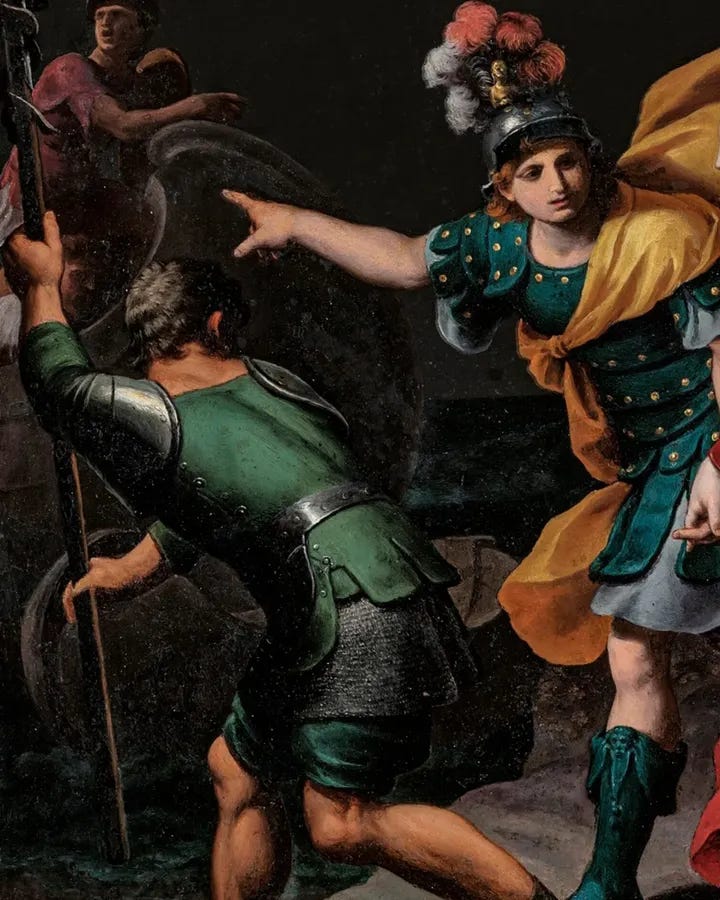Alessandro Turchi - Abduction of Helen, c.1615
The Night That Started a War
You know how myths usually go: bright armor, clashing swords, the fate of empires on the shoulders of heroes. But what if it began with a glance, a touch, and a silence?
Alessandro Turchi’s The Abduction of Helen doesn’t give us the drama. It gives us the moment before—the breath that changed the world.
Painted on polished black Verona marble, the scene is nocturnal.
The darkness of the stone becomes part of the story, allowing Turchi to stage the myth in a world of flickering torchlight and velvet shadow.
Paris, the Trojan prince, is leading Helen of Sparta toward a ship in the shadows.
It’s called an abduction, but there’s no violence here. Helen’s hand rests in his. Her eyes are distant. Her robe glows like fire wrapped in silk.
Is she escaping? Is she complicit? Or is she caught in a story too old to change?
Turchi, known as L’Orbetto (the little blind one), was born in Verona in 1578 and trained under Felice Riccio. His early works echo the Venetian colorists, but by the time he moved to Rome in the 1610s, his style had absorbed the chiaroscuro of Caravaggio and the elegance of the Bolognese school. He became a favorite of Cardinal Scipione Borghese and eventually rose to lead the Accademia di San Luca.
But unlike many of his peers, Turchi chose stillness over spectacle.
In The Abduction of Helen, there are no gods in sight, no stormy Juno, no watchful Athena. Just a torch. A ship. Two people stepping across the threshold of legend. Paris’s orange drapery flutters like a banner of fate. The figures are monumental, yet the moment is hushed—more seduction than siege.
And yet behind their hush, the storm brews. Helen is already married to Menelaus, king of Sparta. Her disappearance will ignite a decade-long war and bring Troy to ashes.
But here, at this precise moment, it hasn’t happened yet. There’s still time to turn back.
Unlike other depictions that cast Helen as a passive victim or a femme fatale, Turchi’s Helen is human. Her gaze is uncertain. Her body leans forward, but she seems hesitant.
Turchi doesn’t tell us what Helen feels. That’s what makes it haunting. She might be yearning, resigned, enchanted—or just very, very tired. And that ambiguity is the real flame at the heart of the painting.
In that uncertainty, we find ourselves.







I think you hinted at what I think, “she’s caught in a story too old to change.”